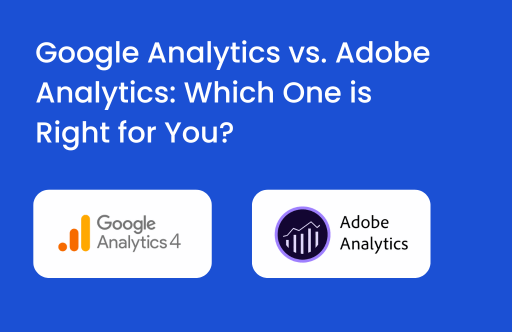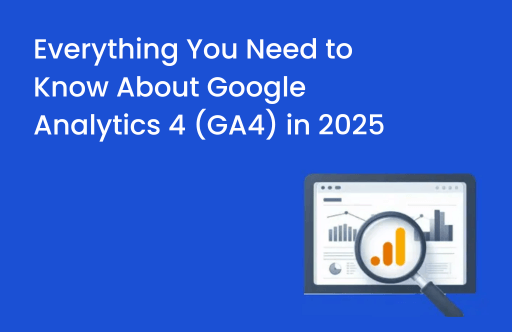An advertiser of a brand or any marketing team of the company invests a huge amount of their marketing budgets in digital advertising in current times. However, if they are not tracking the right metrics, then they won’t be able to compute the efficiency and effectiveness of their advertising campaign deliverables. Without tracking the right metrics, an advertiser seems to be wasting his time, efforts & financial resources.
In this blog post, we will highlight the importance of tracking the right metrics for effective advertising and provide a step-by-step guide to help you get started.
Why is it important to track Metrics for a Digital or Online Advertising Campaign?
It is important for an advertiser to track the right metrics [Cost Metrics and Performance metrics] for the advertising campaigns for several reasons:
1. Measure the Performance of the Advertising Campaign
Tracking important KPIs or metrics helps an advertiser to measure the performance of the advertising campaigns. These defined performance indicators will further help them to monitor the discrepancy between the planned and actual performance. Primary KPIs of the campaign can include Return on ad spend (ROAS), Building Reach & Frequency, and Maximizing conversions [purchases, App installs]; whereas Secondary KPIs of the campaign can include controlling various cost & performance metrics such as CPC [Cost Per Click], CPA [Cost Per Action], VTR [View Through Rate], CTR [Click Through Rate]. By tracking these metrics, an advertiser can identify which campaigns are performing well and which ones need improvement.
2. Optimize Campaigns
Tracking metrics also helps an advertiser to optimize the campaign. Optimization includes steps such as pausing non-performing creative assets or audiences, changing the budget distribution among the existing campaigns, etc. By analyzing and extracting various performance reports, an advertiser can identify areas or metrics that need to be improved in a campaign.
For example, if an advertiser’s KPI is to build more reach and frequency; then he could optimize or pause the creative assets that have low VTR or high CPMs. Further; can make channel exclusions from the line items to improve VTR. Optimizing the campaigns in this manner will help an advertiser to achieve the desired goals at optimum utilization of the budget allocated to campaigns.
3. Make Data-Driven Decisions
Regular tracking and analysis of performance metrics help campaign manager to make data-driven decisions about their advertising campaigns. By properly examining the collected data, an advertiser can make informed decisions about how to adjust the campaigns to achieve their goals.
For example, if a campaign manager finds that his campaign’s CPC [cost per click] is too high, he can adjust the bidding strategy to reduce the cost per click. Further, can pause the keywords or ad sets that have CPC and lower results. Hence by making such data-driven decisions, managers can ensure that they are allocating the budgets and financial resources effectively and getting the most out of the advertising spend.
What are the Steps that an advertiser needs to follow for an effective tracking of Key campaign Metrics?
Now as we discussed the importance of tracking metrics for effective advertising in the initial part of the blog, let’s dive into a step-by-step guide to help a campaign manager to get started.
Step 1– Define Your Campaign Goals
Before an advertiser starts to track metrics, he needs to define the campaign goals. Different campaign goals might include- increasing brand awareness, generating leads, or driving sales, and building more reach.
It is very important that the campaign goals should align with the overall business objectives and should be specific, measurable, attainable, relevant, and time-bound (SMART). Once advertisers define their goals, they can determine which metrics to track to measure the campaign’s progress towards those goals.
Step 2– Identify the Campaign’s KPIs [Key Performance Indicators]
Key performance indicators (KPIs) are the metrics that an advertiser will use to measure the success of their advertising campaigns. It is important to establish a planned KPI before the start of the campaign; so that at the end of the delivery; a campaign manager can evaluate the campaign’s success by measuring the discrepancy between Planned V/s actuals.
Some common KPIs include:
Click-through rate (CTR): the percentage of people who click on the ad after seeing it.
Conversion rate: the percentage of people who complete a desired action, such as making a purchase or filling out a form.
Cost per click (CPC): the average cost of each click on your ad.
Return on ad spend (ROAS): the amount of revenue generated for each dollar spent on advertising.
While choosing the KPIs, an advertiser should ensure that they are relevant to their business’s goals and are actionable. The goals should be measurable because the performance numbers will help the campaign managers to optimize the campaign and evaluate the growth of the campaign.
Step 3– Set Up Tracking
Tracking is extremely important in advertising campaigns as it allows an advertiser to measure the effectiveness of their campaigns and make data-driven decisions to optimize the desired results and KPIs. Below are some of the important aspects to be considered while setting up
A. Use Tracking URLs
One way to track the advertising campaigns is by using tracking URLs. A tracking URL is a unique URL that an advertiser needs to create for each ad campaign. It includes parameters to track data in Google Analytics or other tracking tools.
For example, if an advertiser is running a Facebook ad campaign, he can create a tracking URL for that campaign that includes the campaign name, the source (Facebook), and the medium (paid social). There are custom or additional parameters such as content, a term that can be used to track additional details of a campaign such as keywords, audience, creative details, etc.
B. Conversion Tracking Set Up
An advertiser can set up conversion events to track the events such as purchases, leads, form submissions, etc. Like, he can use Google Ads conversion tracking to track actions that people take on your website after clicking on one of your ads. For example, with Google Ads conversion tracking set up, you can see which one of your Google Ads advertisements generates the most sales on your online store.
The conversion tracking code will track when a specific user completes a specific action on the specific website (e.g., makes a purchase) after clicking on one of their ads. An advertiser will be able to then see how many conversions each ad campaign is generating and can further use that data to optimize their campaigns.
C. Integrate Ad Platform [Facebook, Google] with Your Analytics Tool [GA, Shopify]
Many advertising platforms, such as Facebook, DV360, and Google Ads, allow an advertiser to integrate your ad account with your analytics tool (e.g., Google Analytics). This integration allows you to track data from your advertising campaigns directly in your analytics tool.
To set up the integration, an advertiser first needs to connect the ad account to the analytics account and enable auto-tagging. Once the platform has set up the integration, the campaign manager will be able to see data such as clicks, impressions, and conversions for each
Step 4– Analyze the Data
Once appropriate tracking is set up, an advertiser can start collecting data on their advertising campaigns. Further, to analyze the data effectively, an advertiser needs to use different data visualization tools, create reports, and identify trends and patterns. Google Data studio or formerly known as Lookerstudio is one of the famously used data visualization tools. Graphical and tabular summarized representations of collected data will help in better analysis and optimizing the campaign.
A. Use Data Visualization Tools
Data visualization tools, such as Looker BI or Tableau, can help an advertiser to interpret the data by creating visualizations such as graphs and charts. These tools can help in identifying the trends and patterns in the data and make it easier to communicate your findings to others. Also; weekly and monthly comparisons will be easy with these tools. These tools can be easily integrated with Google ads accounts or Google Sheets.
B. Create Reports
Creating reports helps an advertiser to summarize the data and communicate the findings to the related stakeholders. One can create reports using tools such as Google Data Studio or Microsoft Excel. The basic primary and secondary KPIs should be included in the reports along with the important cost & performance metrics such as CPC, impression, spends, and CPA.
C. Identify Trends and Patterns
It’s always recommended that a campaign manager should regularly analyze the data and study the trends and patterns of performance before making any optimization call or decision.
For example, an advertiser observed a trend that their ads are performing better during certain times of the day or on certain days of the week. By identifying these patterns, they can adjust their targeting or bidding strategy to improve the overall results.
Step 5- Make Data-Driven Decisions
Once data is analyzed; a campaign manager needs to make data-driven decisions. Decisions or optimization strategies should always be backed by data or numbers. Because this will help campaigns in achieving the planned KPIs and reduce discrepancies between actual and budgeted. Here are a few ways to use your data to optimize your campaigns:
A. Adjust Your Targeting
If an advertiser or campaign manager finds that their ads are not reaching their targeted audience, then they can adjust with the targeting parameters such as age, geography, HHI, Device, Platform, Placements, etc.
For example, one may sometimes find that a campaign is not spending to the extent of the allocated budget because the potential reach of the audience is less. In that case; one can expand the target audience by expanding geography, age, HHI, parental status, etc. This will increase the potential reach of the campaign and it might generate more results.
B. Tweak Creatives Assets
If a certain creative has good CTR [Click Through Rate] but a low Conversion rate; then there is a possibility that there is a misalignment between the creative communication and offers available on the website/Landing page. Hence, a campaign manager should always experiment with different headlines, images, descriptions, and CTA [Call-To-Action] to check which
combination is performing better. Also, different creative formats such as static images, videos, carousels, catalogues, Gifs, or HTML images should be used for different conversion events & audiences.
C. Optimize the Campaign’s Bidding Strategy
If the campaign reports show that the cost per click (CPC) or cost per impression (CPM) is too high, one can adjust the campaign’s bidding strategy to reduce unnecessary costs.
For example, a campaign manager might need to adjust their bidding strategy based on the performance of each ad and target audience. If the cost per purchase from a specific campaign or ad set is very high; then an advertiser should use the Cost cap strategy or Tcpa bidding strategy to cap the max cost that will be spent for a specific purchase or conversion from that specific campaign.
D. Allocate Budget/ Spends Wisely
By analyzing the data, one can determine which campaigns are generating the best return on investment (ROI). Hence, a campaign manager should regularly re-shuffle budgets among the best ad sets as per the performance [in case of ABO or manual budgeting]. This will help the campaigns in delivering the best results.
E. Regularly Experiment and Test
Finally, don’t be afraid to experiment and test different strategies. It was often recommended to experiment and take quick calls on the campaign performance. By testing and analyzing the results, one can continually optimize your campaigns and improve your ROI.
For example– Facebook has recently launched the Advantage+ shopping campaign which is a completely automated campaign. E-commerce clients should try this campaign to enhance the overall performance and reduce CPA.
Similarly; one can experiment with new audiences, and targeting. This will help a campaign manager to understand what is performing well.
Conclusion
Effective advertising requires tracking and analyzing the right metrics to ensure that the campaigns are generating a positive ROI. By following the steps outlined in this blog above, one can set up tracking, analyze the data, and make data-driven decisions to optimize the campaigns.
Lastly remember to identify the KPIs, set up tracking, analyze your data, and use that data to make informed decisions about your advertising campaigns. By doing so, one can achieve better results and maximize your advertising ROI.






